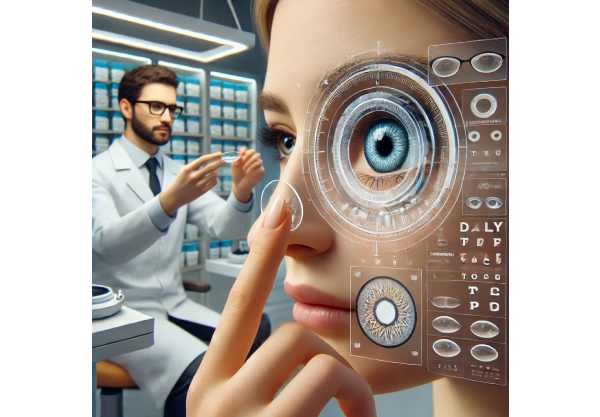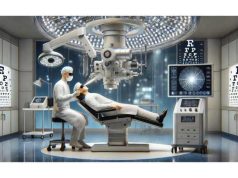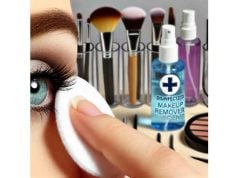Navigating the World of Contact Lenses: A Guide for Clear Vision
For many, the transition from glasses to contact lenses represents a significant lifestyle change, offering freedom from frames and a wider field of vision. However, the array of contact lens options available today can be overwhelming. With advancements in technology and materials, contact lenses are no longer a one-size-fits-all solution. From daily disposables to specialized lenses for astigmatism, the choices cater to various vision needs and lifestyle preferences. Whether you’re considering contact lenses for the first time or exploring new options to better suit your needs, understanding the different types of contact lenses available can help you make an informed decision. This guide will delve into the various options, helping you find the perfect fit for your vision and lifestyle.
Understanding the Different Types of Contact Lenses: Materials and Wear Schedules
When exploring contact lenses, it’s important to understand that they can be classified based on their material, wear schedule, and the specific vision problems they address. Each type has distinct advantages and considerations, making it crucial to select the one that best suits your individual needs.
1. Soft Contact Lenses: Comfort and Flexibility
Soft contact lenses are by far the most popular type of contact lenses worldwide. Made from soft, flexible plastics called hydrogels, these lenses are known for their comfort and ease of adaptation. They conform closely to the surface of the eye, which reduces the risk of debris getting underneath the lens and causing discomfort.
a. Daily Disposable Lenses
Daily disposable lenses are designed to be worn for one day and then discarded, making them the most convenient option for many users. They are ideal for those who prefer a low-maintenance lens option or have allergies that might be aggravated by lens deposits. The daily disposal of lenses also reduces the risk of infections since there is no need for cleaning or storage. This makes them an excellent choice for those with busy lifestyles or who are new to wearing contacts.
b. Bi-Weekly and Monthly Disposable Lenses
Bi-weekly and monthly disposable lenses offer a balance between convenience and cost-effectiveness. These lenses are worn daily and removed at night for cleaning and storage, with each pair lasting for two weeks or a month, respectively. While these lenses require more maintenance than daily disposables, they tend to be more affordable in the long run. However, proper hygiene is crucial to avoid complications such as infections or buildup of protein deposits.
c. Extended Wear Lenses
Extended wear lenses are designed to be worn continuously, including while sleeping, for up to 30 days. These lenses are made from silicone hydrogel, a material that allows more oxygen to pass through to the cornea than regular soft lenses, making them suitable for extended wear. While the convenience of not having to remove your lenses daily is appealing, extended wear lenses carry a higher risk of complications, such as eye infections, and should only be used under the guidance of an eye care professional.
2. Rigid Gas Permeable (RGP) Lenses: Durability and Sharp Vision
Rigid Gas Permeable (RGP) lenses, also known as hard lenses, are made from durable materials that allow oxygen to pass through to the eyes. Although they are less popular than soft lenses, RGP lenses provide several distinct benefits, particularly for those with certain vision problems.
a. Superior Visual Clarity
One of the main advantages of RGP lenses is their ability to provide sharp, clear vision, often superior to that of soft lenses. This is because RGP lenses maintain their shape on the eye, providing a consistent refractive surface, which can be particularly beneficial for individuals with astigmatism or other irregular corneal conditions.
b. Long-Term Cost Effectiveness
While RGP lenses require an initial adjustment period, as they are less immediately comfortable than soft lenses, they are highly durable and can last for several years with proper care. This makes them more cost-effective over time compared to disposable lenses.
c. Customization for Complex Prescriptions
RGP lenses are also highly customizable, making them an excellent choice for individuals with complex prescriptions, such as those with high levels of astigmatism or keratoconus. They can be designed to fit the specific contours of your eye, providing a tailored vision correction solution that soft lenses may not be able to achieve.
3. Specialty Contact Lenses: Solutions for Specific Needs
Beyond the standard categories of soft and RGP lenses, there are specialized contact lenses designed to address specific vision problems or lifestyle needs. These lenses offer unique solutions for individuals with particular conditions or requirements.
a. Toric Lenses for Astigmatism
Astigmatism is a common vision condition caused by an irregularly shaped cornea, which can result in blurred or distorted vision. Toric lenses are specially designed to correct astigmatism. Unlike regular spherical lenses, toric lenses have different powers in different meridians of the lens to compensate for the corneal irregularity. Toric lenses are available in both soft and RGP materials and come in daily, bi-weekly, and monthly disposable options.
b. Multifocal and Bifocal Lenses
For individuals with presbyopia, a condition that typically develops with age and affects the ability to see objects up close, multifocal and bifocal lenses provide a convenient solution. These lenses are designed with multiple zones of correction, allowing the wearer to see clearly at various distances without the need for reading glasses. Multifocal lenses are available in both soft and RGP materials, offering flexibility based on personal preference and visual needs.
c. Scleral Lenses
Scleral lenses are a type of RGP lens that is larger in diameter and vaults over the cornea, resting on the white part of the eye, known as the sclera. These lenses are often used for individuals with irregular corneas, such as those with keratoconus or severe dry eye, where standard lenses may not provide adequate comfort or vision correction. Scleral lenses can also be customized to address other specific vision problems and provide exceptional comfort and stability.
d. Cosmetic and Colored Lenses
Cosmetic and colored contact lenses offer the ability to change or enhance the color of your eyes while also correcting vision. Available in both prescription and non-prescription forms, these lenses can be a fun way to alter your appearance. However, it’s important to treat cosmetic lenses with the same care as regular contacts to avoid potential eye health issues. These lenses should always be obtained through a reputable source and fitted by an eye care professional to ensure they are safe and suitable for your eyes.
4. Orthokeratology (Ortho-K) Lenses: Vision Correction While You Sleep
Orthokeratology, commonly known as Ortho-K, involves the use of specially designed RGP lenses that temporarily reshape the cornea to correct vision while you sleep. These lenses are worn overnight and removed in the morning, allowing you to see clearly throughout the day without the need for glasses or contact lenses. Ortho-K is particularly popular for children and young adults with myopia (nearsightedness) as it can slow the progression of the condition. While Ortho-K lenses offer the convenience of daytime freedom from corrective lenses, they require consistent use and regular follow-up with an eye care professional to ensure effectiveness and safety.
Choosing the Right Contact Lenses: Factors to Consider for Your Lifestyle and Vision Needs
Selecting the right type of contact lenses involves more than just addressing your vision correction needs. It also requires consideration of your lifestyle, daily routine, and personal preferences. With so many options available, it’s important to weigh the pros and cons of each type and consult with an eye care professional to determine the best fit for you.
1. Assessing Your Vision Correction Needs
The first step in choosing the right contact lenses is to understand your specific vision correction needs. Whether you have myopia, hyperopia, astigmatism, or presbyopia, there are contact lenses designed to address these conditions. An eye care professional can perform a comprehensive eye exam to determine your prescription and recommend lenses that will provide optimal vision correction.
2. Considering Your Lifestyle
Your daily routine and activities play a significant role in determining the best type of contact lenses for you. If you lead a busy lifestyle and prefer low-maintenance options, daily disposable lenses might be ideal. For those who participate in sports or outdoor activities, lenses that offer UV protection or are specifically designed for stability during movement may be more suitable. On the other hand, if you have specific conditions such as dry eye or irregular corneas, specialty lenses like scleral or Ortho-K may be recommended.
3. Evaluating Comfort and Convenience
Comfort is key when it comes to wearing contact lenses. The material and design of the lenses will affect how comfortable they are for extended wear. Soft lenses are generally more comfortable for most people, especially those new to contact lenses. However, if you have complex prescriptions or specific eye conditions, you might find that RGP or specialty lenses offer better vision correction and long-term comfort. Additionally, consider the convenience of the wear schedule—whether you prefer the simplicity of daily disposables or the longer-term use of bi-weekly or monthly lenses.
4. Seeking Professional Guidance
Choosing the right contact lenses is a highly individualized process that should involve professional guidance. An eye care professional can help you navigate the various options, taking into account your vision correction needs, lifestyle, and comfort preferences. They can also provide essential education on proper lens care and hygiene to ensure that your experience with contact lenses is safe and comfortable.











